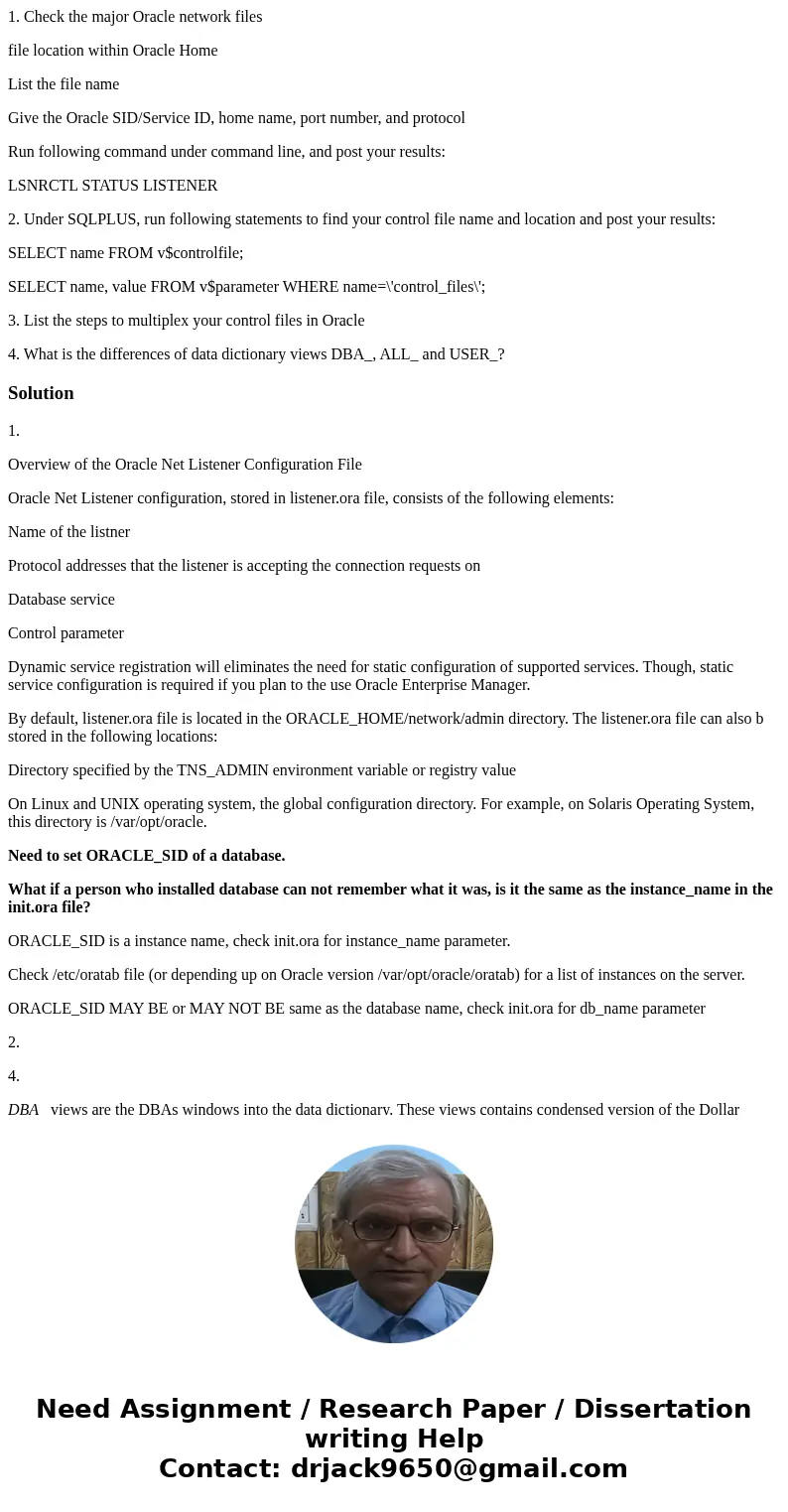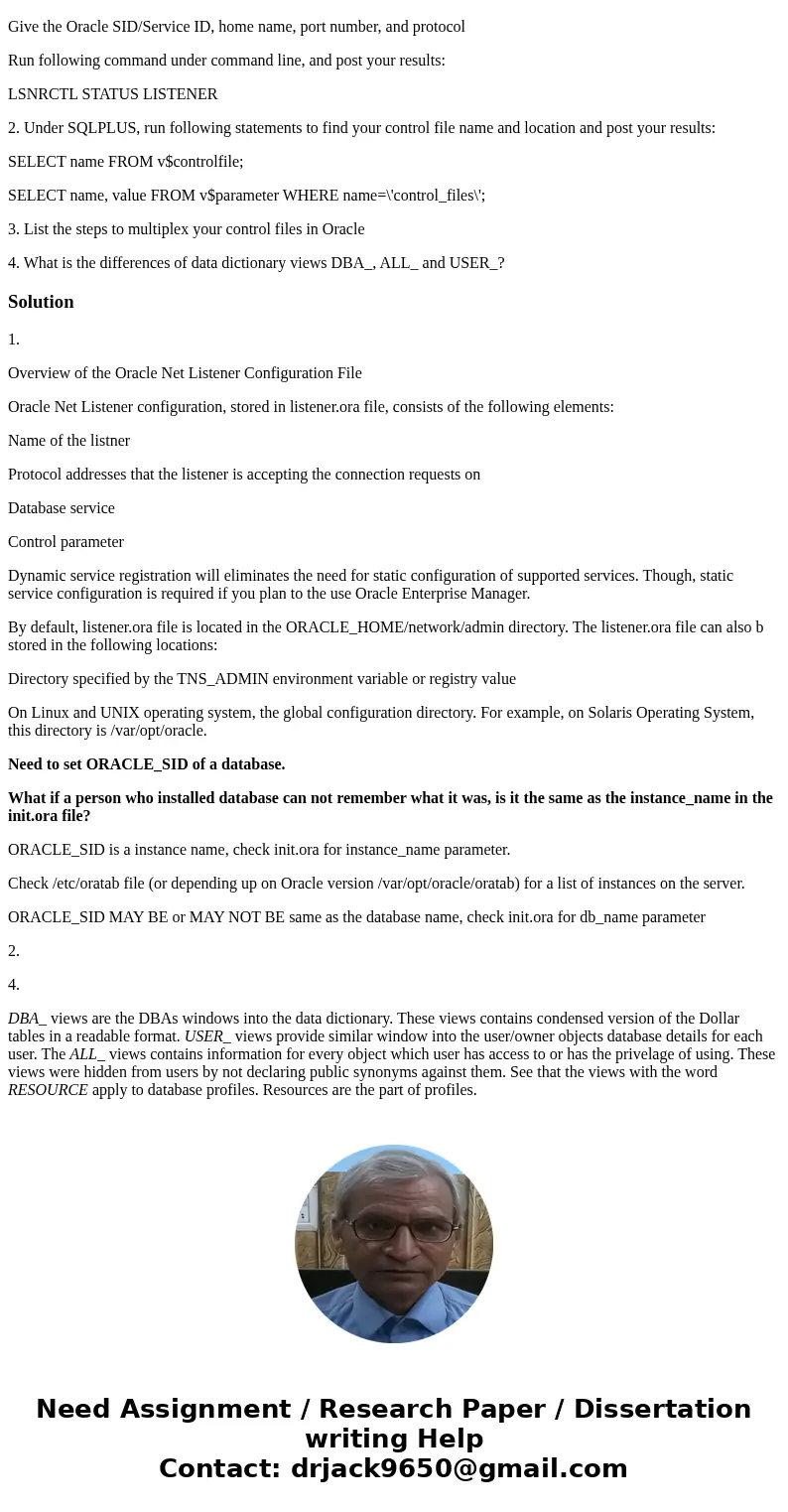1 Check the major Oracle network files file location within
1. Check the major Oracle network files
file location within Oracle Home
List the file name
Give the Oracle SID/Service ID, home name, port number, and protocol
Run following command under command line, and post your results:
LSNRCTL STATUS LISTENER
2. Under SQLPLUS, run following statements to find your control file name and location and post your results:
SELECT name FROM v$controlfile;
SELECT name, value FROM v$parameter WHERE name=\'control_files\';
3. List the steps to multiplex your control files in Oracle
4. What is the differences of data dictionary views DBA_, ALL_ and USER_?
Solution
1.
Overview of the Oracle Net Listener Configuration File
Oracle Net Listener configuration, stored in listener.ora file, consists of the following elements:
Name of the listner
Protocol addresses that the listener is accepting the connection requests on
Database service
Control parameter
Dynamic service registration will eliminates the need for static configuration of supported services. Though, static service configuration is required if you plan to the use Oracle Enterprise Manager.
By default, listener.ora file is located in the ORACLE_HOME/network/admin directory. The listener.ora file can also b stored in the following locations:
Directory specified by the TNS_ADMIN environment variable or registry value
On Linux and UNIX operating system, the global configuration directory. For example, on Solaris Operating System, this directory is /var/opt/oracle.
Need to set ORACLE_SID of a database.
What if a person who installed database can not remember what it was, is it the same as the instance_name in the init.ora file?
ORACLE_SID is a instance name, check init.ora for instance_name parameter.
Check /etc/oratab file (or depending up on Oracle version /var/opt/oracle/oratab) for a list of instances on the server.
ORACLE_SID MAY BE or MAY NOT BE same as the database name, check init.ora for db_name parameter
2.
4.
DBA_ views are the DBAs windows into the data dictionary. These views contains condensed version of the Dollar tables in a readable format. USER_ views provide similar window into the user/owner objects database details for each user. The ALL_ views contains information for every object which user has access to or has the privelage of using. These views were hidden from users by not declaring public synonyms against them. See that the views with the word RESOURCE apply to database profiles. Resources are the part of profiles.


 Homework Sourse
Homework Sourse